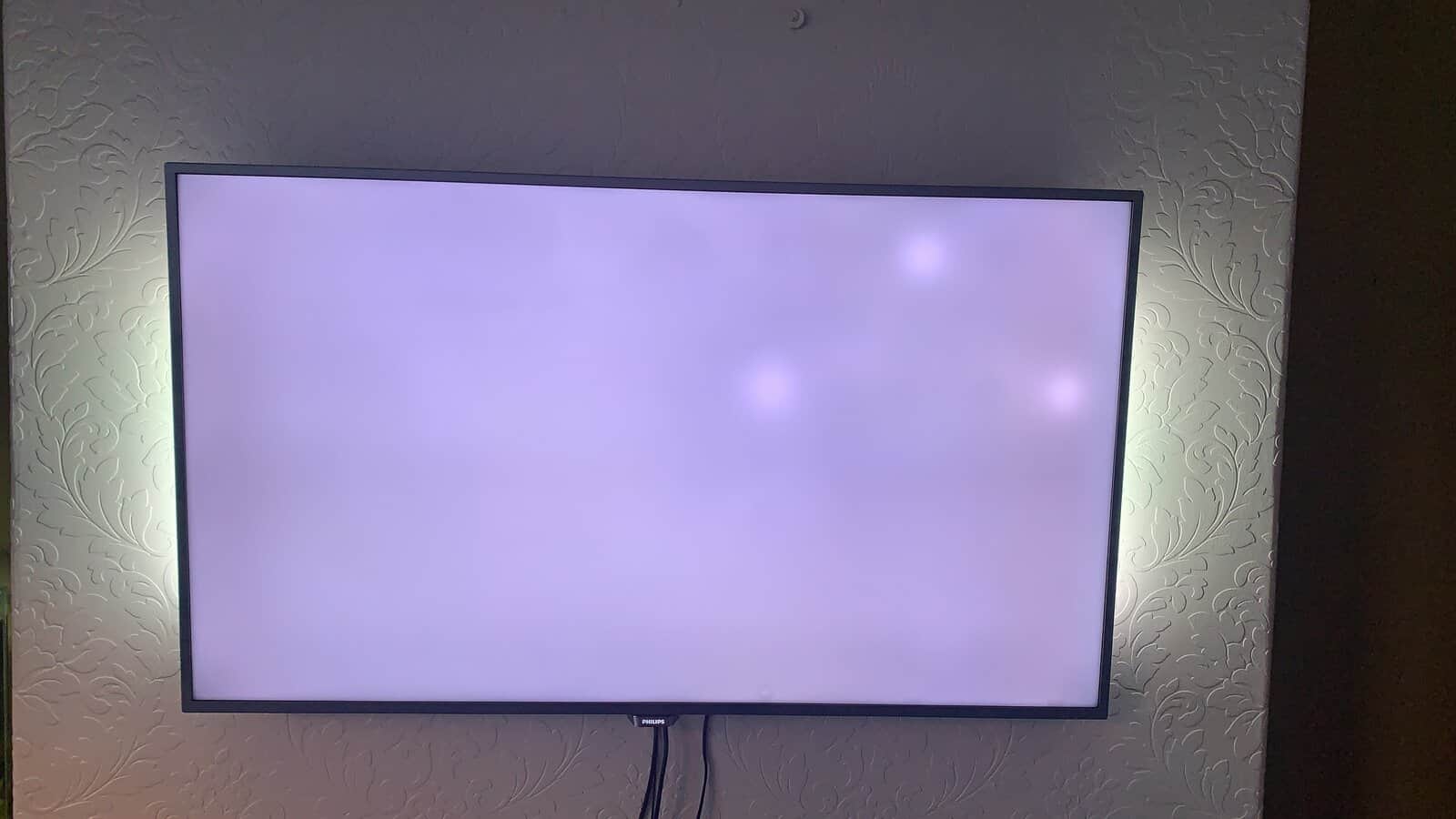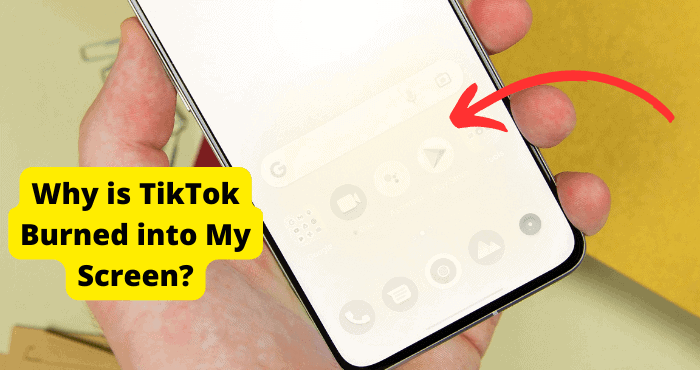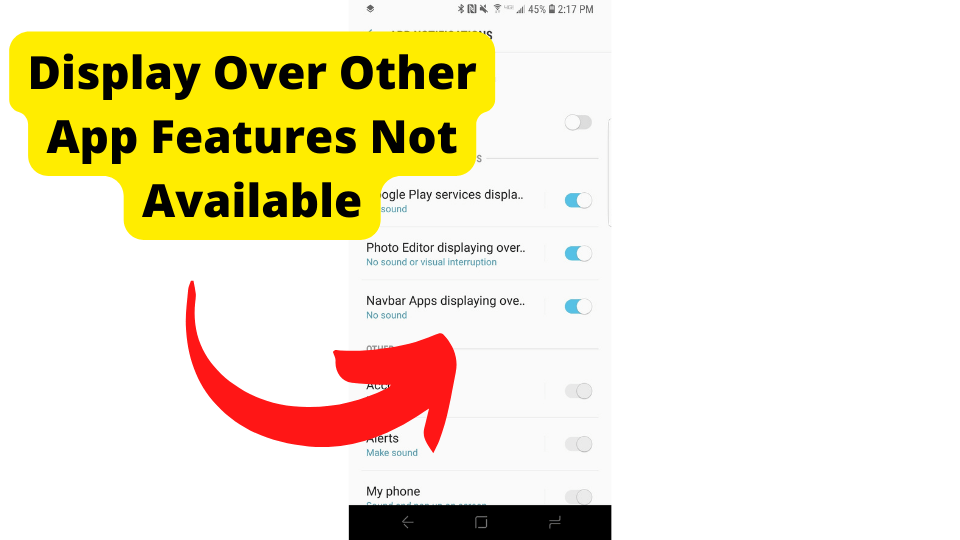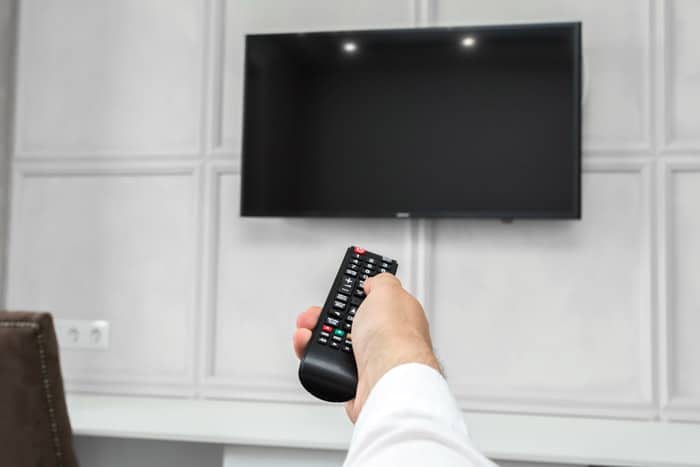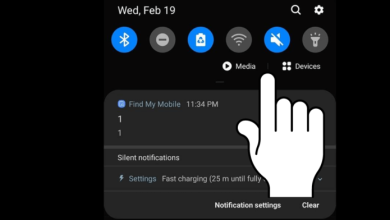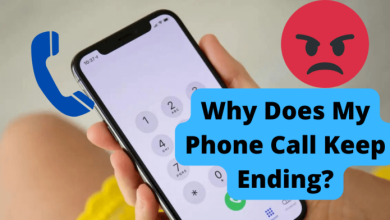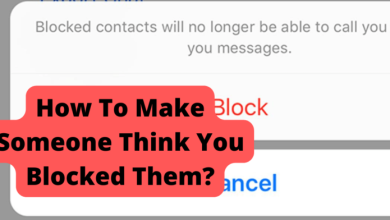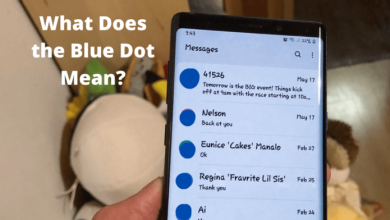Black Spot on Phone Screen? Here’s Why & The Fix
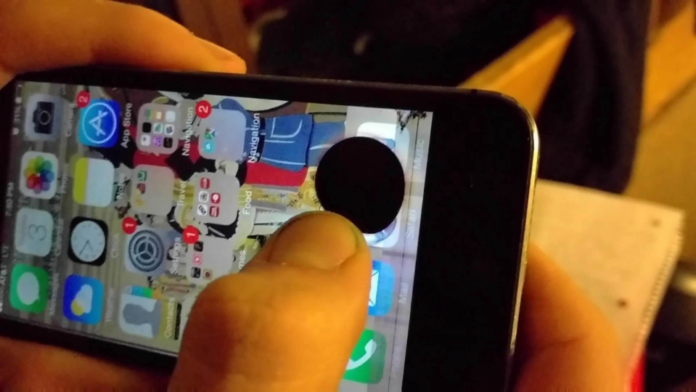
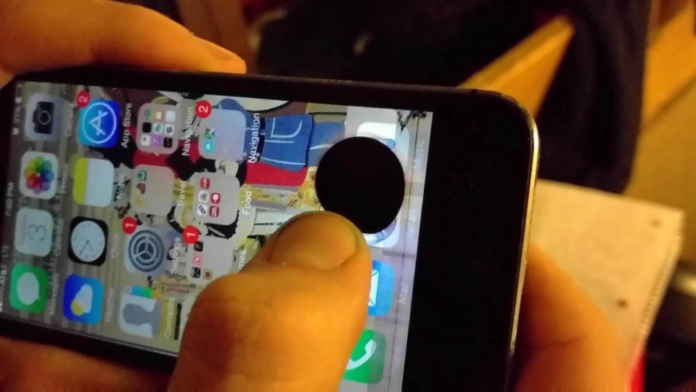
Key Takeaways
- Black spots on phone screens can be caused by dead pixels, stuck pixels, external pressure, or hardware damage.
- Try cleaning the screen, restarting the phone, or performing a hard reset to fix the issue.
- If the problem persists, consider using software hacks or replacing the screen if it’s due to hardware damage.
- Prevent black spots by handling your phone with care, using a screen protector, and keeping your phone clean.
- If you’re not comfortable fixing the issue yourself, consider consulting a professional or contacting the phone manufacturer for assistance.
Do you have a black spot on your phone screen? If so, don’t worry; you’re not alone. This is a common issue that affects many people.
This problem is usually very frustrating as it leaves your phone looking weird and affects your phone’s operation.
In this post, we’ll show you how to fix the black spot on your phone screen. We’ll also give you tips on preventing it from happening again.
Table of Contents
Why Is There a Black Spot on My Phone Screen
You might see a black spot on your phone screen for a few reasons.
One possibility is that an oil residue or fingerprint caused the spot. If this is the case, you can try to clean it off using a cloth or cotton.
Be sure to avoid harsh solutions or liquids, as these could damage your phone screen and entire phone.
Another possibility is that the black spot is a crack in the glass. If this is the case, you’ll need to take your phone in for repair.
Whichever of these possibilities applies to your phone, don’t try to fix the black spot yourself.
This could end up doing more damage than good. Instead, take your phone to a technician or rely on a repair guide to help you out.
Dead Pixel
If your phone has a black spot on the screen, you should first check for a dead pixel. A dead pixel is a pixel on your screen that’s not working.
It’s usually easy to tell if you have a dead pixel, as it will be a black or white dot on your screen. Don’t worry if you have a dead pixel; there are ways to fix it!
One way to try and fix a dead pixel is to use an app called Dead Pixel Tester. This app will help you determine if the pixel is dead or not.
If the app determines that the pixel is dead, you can try fixing it yourself. One way to do this is by massaging the area around the pixel. Be careful when doing this, as you don’t want to damage your phone screen.
Another way to try and fix a dead pixel is by purchasing a new screen protector. Many different screen protectors are available on the market, so be sure to do your research before purchasing one.
Dead pixels also cause a green line on an iPhone screen. This also causes lines on your TV too.
Liquid Crystal Displays
LCD screens use a backlight to display an image. A black spot will form on the screen if something blocks this light. The good news is that these spots are usually easy to fix.
The first step is to identify the source of the light leak. Once you have located it, you can cover it with tape, a Post-it note, or any other object that will block the light.
If this doesn’t work, you can also try adjusting the angle of your phone’s screen.
If you’re still having trouble getting rid of the black spot, we recommend contacting Apple or your device’s manufacturer for assistance.
Internal Pressure on Your iPhone or Samsung
If you feel that your iPhone or Samsung has a black spot on the screen, it can be caused by internal pressure.
Your phone may have been dropped or knocked against something hard. If it’s been exposed to cold temperatures, condensation may have formed inside the phone, causing an internal pressure buildup.
This buildup can cause the phone to crack or shatter when it is turned on.
This can result in a black spot on the screen because it has internal pressure. This can be anything from an overfilled battery, wrong charging cables, or a faulty backlight bulb.
In most cases, if you are experiencing this problem, your phone will be fine, and you can clean it with a cloth. However, if this persists or worsens over time, there’s likely something wrong with your device.
The pressure can also come from the following different sources:
– Your pocket
– A tight case
– Placing the phone in a wallet, purse, or other small bags
– A heavy book, magazine, or tablet (like an iPad) placed on top of the phone
– Carrying too many things at once (such as a briefcase or laptop computer)
Stuck Pixels
A stuck pixel is a dead pixel that won’t light up the entire screen. A stuck pixel can also be a pixel on your phone’s screen that isn’t working right.
It’s a common problem with LCDs and is usually caused by dust or debris on display.
It might be black, or it might be colored but stuck on one tone. In any case, it’s an annoyance that you want to fix.
Thankfully, stuck pixels are usually pretty easy to fix. There are a few different methods, but we recommend trying the resetting way first.
Hold down the power and home buttons simultaneously until your phone restarts. If that doesn’t work, try one of the other methods listed below.
How to Fix a Stuck Pixel on an iPhone
The best way to fix a stuck pixel is to take it apart and clean it out, but this can be a bit tricky because the backlight of your iPhone needs to work correctly to display any content.
If you want to remove black spots from your phone, you need special tools and a bit of patience. Here’s how:
1) Remove your phone’s screen protector and clean it with a soft or microfiber cloth.
2) Take a Q-tip or cotton swab dipped in isopropyl alcohol and apply it directly on top of the black spot on your phone’s display. This will help remove any dust particles stuck underneath your screen protector.
3) Wait about 10 minutes before reapplying a screen protector to your phone.
If you don’t want to mess around with taking apart your iPhone, there are other ways you can get rid of a stuck pixel. It is advisable to leave this to the professionals.
Can a Black Dot on Your Screen Be Fixed?
Whether black dots on your screen can be fixed is a common problem. It’s not something that you should try to fix yourself, but there are some things that you can do to make it easier to live with the problem.
If you have this problem and are looking for ways to fix it, there are two main culprits on your phone.
Dust and dirt. If you have a lot of dust and dirt on your phone, it will cause problems for the screen and the device itself.
The easiest way to clean out your computer is with a can of compressed air. You can get one at any office supply store or hardware store.
The nozzle on these cans of compressed air is explicitly designed to blow out dust from your phone and other electronic devices, so they work well to clean your devices and their connections.
To clean out the inside of your computer, remove all of its parts and put them in a box or bag before using compressed air on them (if necessary).
Then use some canned air on every aspect until everything has been cleaned thoroughly.
If the. The black dot on your phone screen is caused by a dead pixel. It is a common issue and can often be fixed.
There are a few methods you can try to fix a dead pixel. The first is to apply pressure to the screen.
You can do this by using your thumb and index finger to apply pressure around the black dot. Another method is to use an app like Dead Pixel Fixer.
If neither of those solutions works, you may need to consider replacing your screen.
Replace Your Phone Screen
If your screen has a big black spot, the first thing you should do is try to replace the screen. This is a relatively straightforward process and can often be done by the user.
First, find a reputable phone repair shop in your area. Once you’ve found one, take your phone in and ask for a replacement screen. The repair shop can do this for you fairly quickly and for a reasonably low price.
After finding a good shop, you should start thinking about the screen you will put on your phone.
It might be a good idea to try a different screen protector. Some styles are available, but the most common ones are film protectors or tempered glass protectors.
Film protectors are usually cheaper and are made from a thin, flexible material. They adhere to your screen and can be easily removed and replaced when needed.
Tempered glass protectors are more durable and offer more protection than film protectors are also more expensive. They’re made from shatter-resistant glass and attach to your screen using an adhesive or suction cup.
If you’re feeling adventurous, you could also try to replace the screen yourself. This is a somewhat daunting task, but it can be done with the right tools and technical know-how.
We don’t recommend this for first-time repairpeople, but it is an option if you’re feeling brave!
How Much Does it Cost to Fix The Black Dot?
The cost to fix a black dot on a phone screen can vary depending on the type of phone and the repair service. Here are some updated estimates:
- iPhone Models:
- iPhone 13: The cost to fix a black dot on an iPhone 13 screen can range from $150 to $250, depending on the repair service and the extent of the damage. For example, Apple’s official repair service may charge $250 for the issue, while a third-party like ifixit repair service might charge $150 for the same problem.
- iPhone 12 Pro Max: The cost to fix a black dot on an iPhone 12 Pro Max screen can range from $200 to $300, depending on the repair service and the extent of the damage. For example, Apple’s official repair service may charge $300 for the issue, while a third-party repair service might charge $200 for the same problem
- Samsung Galaxy S Series:
- Galaxy S10+: The cost to fix a black dot on an S10+ screen can range from $200 to $300, depending on the repair service and the extent of the damage. For example, Samsung’s official repair service may charge $300 for the issue, while a third-party repair service might charge $200 for the same problem.
- Samsung Galaxy S22 Series:
- Galaxy S22: The cost to fix a black dot on an S22 screen can range from $250 to $350, depending on the repair service and the extent of the damage. For example, Samsung’s official repair service may charge $350 for the issue, while a third-party repair service might charge $250 for the same problem.
- Warranty or Insurance: If you have a warranty or insurance plan for your phone, the repair may be free or significantly discounted. For example, Apple’s warranty may cover the repair for a black dot on an iPhone screen, while Samsung’s warranty may also cover the issue for certain models.
Watch a quick video to fix it yourself.
This will all come out cheaper than getting Samsung to repair it. Replacing the screen yourself is not that hard. Just follow the video carefully.
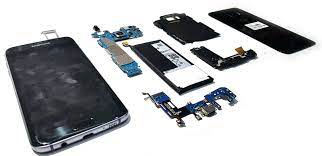
If you’re not covered by a warranty or insurance plan, or if your phone is out of warranty or past the expiration date of your insurance plan, you can still get the repair done–you’ll have to pay for it yourself.
It’s expensive to fix a black spot on your phone screen. The reason is that the screen and the glass underneath it are fragile, so they can break easily and cause damage to other parts of your phone.
If you have a cracked or shattered screen, there are several ways that you can fix it.
If you have an iPhone, there are two main options for replacing the broken glass: buying a replacement phone or getting a third-party repair shop to replace it, which is very expensive.
Avoid Dropping Your Phone
We’ve all been there: you take your phone out of your pocket, only to find a black spot on your screen. It’s a shame.
There are plenty of ways to avoid dropping your phone and potentially spreading the black spot to other screen parts.
First off, if possible, don’t carry it in your hand. This is especially true when you’re walking around. If you need to take photos or check something on the screen, then put it down and walk away from it for a few minutes.
To prevent the black spot from spreading over your screen, try not to use too much force when pressing buttons or scrolling through menus.
Don’t tap too hard on anything; this can also cause damage to your phone’s touchscreen.
Also, try not to rest your fingers on the edge of the screen while holding it up against yourself; this will cause scratches and gouges on the glass surface of your phone’s display panel over time.
The best way to avoid dropping your phone is to buy a case designed specifically for the purpose.
Many styles and colors are available, so finding one that fits your needs shouldn’t be too difficult.
If you want to ensure that nothing happens to your precious device, I suggest using some screen protectors on top of the case. You can find these things pretty easily online, and they won’t cost much either!
To avoid these problems, keep your phone away from any damage or impact. If possible, do not use your phone while it is being charged, as it may cause some damage to the battery and other parts of the phone.
Avoid Buying Phones With LCD Display
If you’re someone who’s been dealing with a black spot on your phone screen, you’re probably wondering how to get rid of it. We feel your pain – it can be frustrating when your screen is constantly covered in these little spots.
First of all, we recommend avoiding phones with LCDs. The black spots are a common issue with these displays and are challenging (sometimes impossible) to fix.
If you’ve already got a phone with an LCD, don’t worry – we’ve got a few solutions for you.
One is to use an app like Screenhero, which will allow you to share your screen with a friend, and they can help you work on getting rid of the black spots.
Another solution is UV light to shine on your screen and remove the spots. You can buy a UV light for around $10 on Amazon, and it’s a great way to take care of your device.
Why Is There a Black Dot on My Samsung S21
If you have a black dot in the middle of your screen, it’s probably just your phone’s camera.
The camera on the Samsung S21 is effortless and straightforward. The lens is fixed, so you can’t adjust it, but you can use the flash.
The most common problem with this camera is that it doesn’t work correctly. This could be due to something as simple as dirt getting into the lens or a malfunctioning shutter button.
But it may be time for a professional consultation if your phone doesn’t work.
A professional can tell you what’s wrong with your phone and how much it will cost for repairs.
The Samsung S21 has three camera arrays. The main lenses are a 12-megapixel wide-angle, a 12-megapixel ultra-wide, and a 64-megapixel telephoto lens.
The camera has a hybrid zoom, meaning you will get great images from the camera. The camera might be damaged if you try to take a picture and face any problems.
This can happen for many reasons, including water damage or a dead battery.
If your screen is still working and the camera isn’t, then there’s probably a problem with the lens itself. You may need to replace it with a new one. If this isn’t possible, you will need some help from Samsung.
How Do Pixels Get Damaged?
Pixels are the building blocks of your phone’s display. They’re tiny light-emitting squares that create the image on your screen.
When one or more of these pixels become damaged, you’ll see what’s known as a black spot on your screen.
There are a few ways these pixels can become damaged:
– Dropping or hitting your phone screen can cause the pixels to become damaged
– Exposing your phone to direct sunlight can also cause damage to the pixels
– Leaving your phone in hot or cold environments can affect the pixel’s performance
Does it Go Away on its Own?
No, it doesn’t. If you don’t remove the black spot, it will not go away after some time.
The black spot on your phone screen can be a nuisance, but it doesn’t have to be.
If you’ve tried everything to get rid of the black spot or if it’s caused you trouble for a long time, it may be time to consult a professional. This is because waiting for it to go away alone will not work.
The best place to start is by removing the back cover of your phone and taking out the battery.
Before you do that, turn on your phone and hold the home button for about two seconds until all the buttons light up. You’ll see a red circle with an X inside it appear on the screen.
This is known as “hardware reset,” which means that all settings on your phone will be reset back to factory defaults when you turn off your device.
Now look at the black spot on your screen and try moving it around with your finger or a stylus pen if you have one.
If you can’t move it at all, then this could mean something wrong with either the digitizer touch screen or the front glass digitizer panel, the one covering most of your display.
In this case, we recommend contacting the phone manufacturer for assistance!
Conclusion
When you look at your phone’s screen and discover a black spot on it, it can be aggravating. However, there is no need to be worried because we are here to lend a hand.
This post has provided an overview of several alternative solutions that can be used to address the issue.
If you follow some of the advice and suggestions we have provided, you will soon have a phone that functions just as well as it did when you first purchased it.

